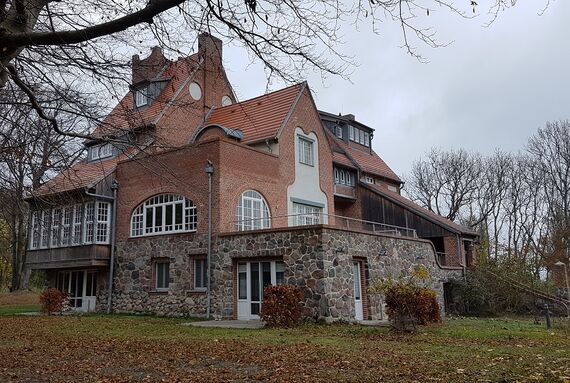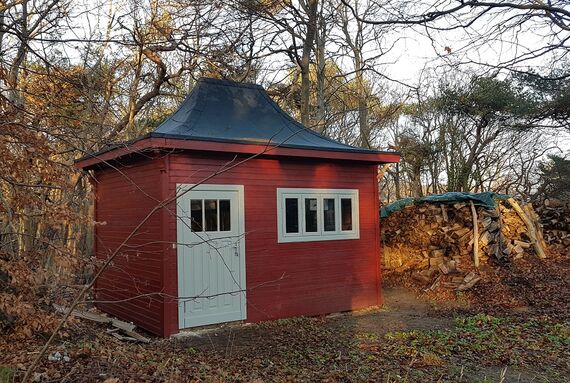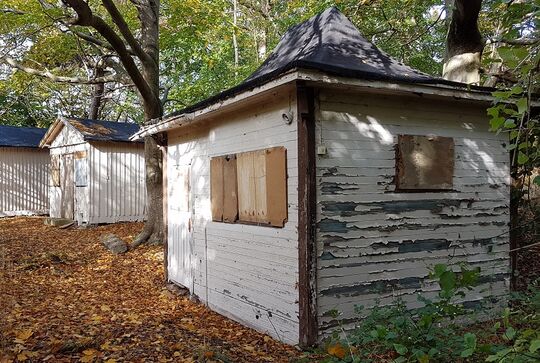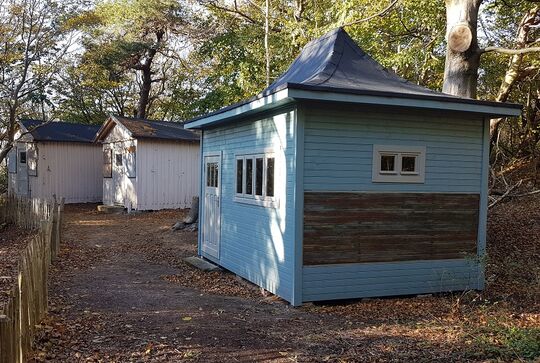Historic Leitzenburg huts shine like new again
ON THE BALTIC SEA ISLAND OF HIDDENSEE. THE RENOVATION WORKS ON THE LIETZENBURG ESTATE ARE MAKING GREAT PROGRESS THANKS TO OSMO COUNTRY COLOUR.
On the Baltic Sea island of Hiddensee, one of the most noticeable and well-known buildings is Lietzenburg, built by Oskar Kruse between 1904 and 1905. After making his wealth through a timber yard in Berlin, Kruse decided to dedicate the rest of his life to painting and withdrew from the business world. On various study trips, he visited the island Hiddensee and fell in love with the unspoiled nature and the beautiful scenery. Without further ado, he moved the family residence to the Island. Lietzenburg should be established as an artist colony. After Oskar’s death, his brother Max and his wife Käthe inherited the house and until the 1940s they ran a hotel called Pension Lietzenburg in it.
In 1949, the University of Greifswald took over the estate and ran it into a spa resort until 1989. After the Reunification of Germany, the deed to the estate was transferred to Max Kruse, the youngest son of Max and Käthe Kruse. However, he had no use for the mansion and sold it. For many years, the estate was left abandoned until at the beginning of the 21st century it fell into the hands of Angelika and Claus Beneking. In the meantime, the estate has been thoroughly renovated and at present, it is used as their private residence.

On the Lietzenburg estate, there are six historic wooden huts. Three of the pavilion-like huts are around 100 years old; Max and Käthe Kruse erected them at the beginning of the 1920s to meet the increasing demand for accommodation. It is possible that Käthe found inspiration in the Ticino-based artist colony Monte Verità. From 1904 she lived and painted with her two daughters there at first in one of the so-called “light-and-air huts”, like the Casa Selma, which are part of the “close to nature” concept of the artist colony. Later she lived the Roccolo tower on the colony’s grounds until 1909. Thus the three Kurse huts create an interesting connection between Lietzenburg and Monte Verità, and in turn Max and Käthe Kruse brought the estate a little bit closer to Oskar’s original vision for Lietzenburg.
The other three were built by the University of Greifswald in the 1950s and 60s to meet the accommodation and catering needs of employees and guests. After the huts had faced many years of rain and weather, the Lietzenburg Hut Project was started in autumn 2019.

At first the damage on the roofs and foundations caused by weathering were eliminated. Then it was time to take care of the bleached out timber cladding as well as doors and windows – this is where Osmo came into the game. Thanks to its safe ingredients – based on natural oils and waxes – and its long-lasting protection against UV radiation and moisture, Osmo Country Colour proved to be the optimal coating for renovations. The window frames and doors were coated in 2708 Pebble Grey; the hut cladding in 2308 Nordic Red. For the other historic huts, a “sea blue-green-grey” colour could be found on samples taken from the original cladding. Since all colours in the Country Colour range can be mixed with each other and the wood coating is also available in nearly all RAL and NCS colours, a custom colour matching the colour of the original cladding could be produced.
Now the first two of three Kruse huts shine like new again and are optimally protected against climatic influences. Next year the renovations will continue and the work on the three, more modern huts has already begun – how the huts will be used is still not known.
Photos: Claus Beneking



